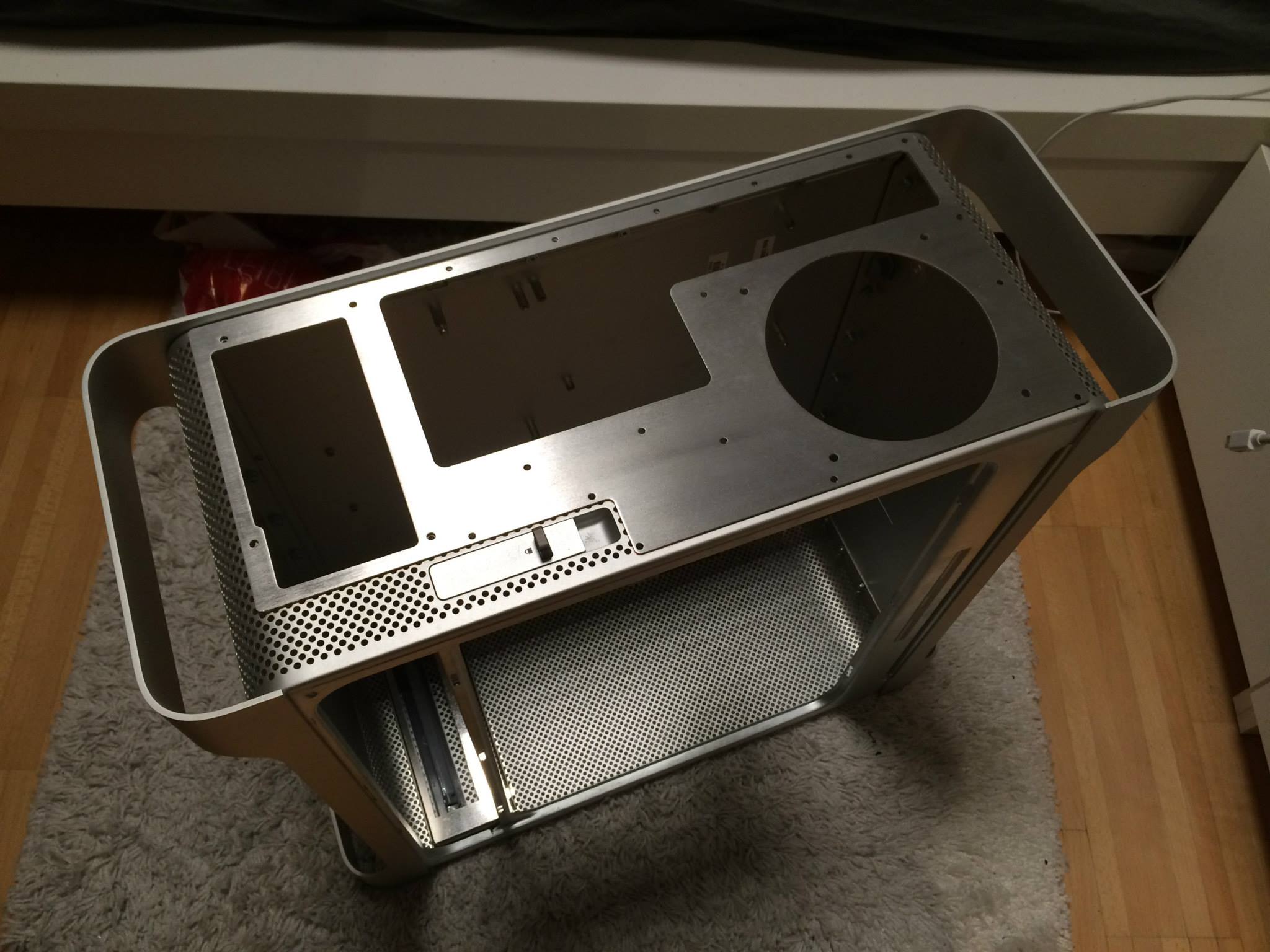

#POWER SUPPLY MAC POWER G5 PRO#
All modern 32-bit x86 processors since the Pentium Pro have had 36-bit memory address capability. Currently, the Power Mac G5 can hold sixteen gigabytes of RAM using eight memory slots with 2 GiB per stick. In addition, due to the 64-bit processor (and 42-bit MMU) the Power Mac G5 has a RAM capacity greater than the four gigabyte addressable memory limit of traditional 32-bit processors. The processor at the heart of the Power Mac G5 has a " superscalar, superpipelined" execution core that can handle up to 216 in-flight instructions, and uses a 128-bit, 162-instruction SIMD unit ( AltiVec). These result in a total bandwidth of up to 20 GB/s. Each processor in the Power Mac G5 has two unidirectional 32-bit pathways: one leading to the processor and the other from the processor. The dual-core G5 configuration can communicate through its FSB at half its internal clock speed. It contains PCI-X slots, where the newer models use PCI Express. A 2.7 GHz single-core model was also released. The Power Mac G5 line in 2006 consisted of three, dual-core PowerPC G5 configurations, operating at 2.0, 2.3, and a dual-processor 2.5 GHz configuration (the dual contains four cores in total, two per processor). Apple refers to the dual-core PowerPC 970MP processors as either the "G5 Dual" (for single socket, dual-core configurations), or G5 Quad (for dual socket, four-core configurations). Subsequent revisions of the "G5" processor have included IBM's PowerPC 970FX (same basic design on a 90 nm process), and the PowerPC 970MP (essentially two 970FX cores on one die). CMOS 9S is the combination of SOI, Low-k dielectric insulation, and Copper interconnect technology, which were invented at IBM research in the mid-1990s. The original PowerPC 970 has 58 million transistors and is manufactured using IBM CMOS 9S at 130 nm fabrication process. IBM invested over $3 billion US dollars in a new lab to produce these large, 300 mm wafers." (This lab is a completely automated facility located in East Fishkill, New York, and figures heavily in IBM's microelectronics strategy above and beyond the partnership with Apple). Kelly, "The goal of this partnership is for Apple and IBM to come together so that Apple customers get the best of both worlds, the tremendous creativity from Apple Computers and the tremendous technology from the IBM corporation. At the introduction of the Power Mac G5, Apple announced a partnership with IBM in which IBM would continue to produce PowerPC variants of their POWER processors. The PowerPC "G5" (actually called the PowerPC 970 by its manufacturer, IBM) is based upon IBM's dual-core POWER4 microprocessor. The computer was soon dismantled and replaced with a new cluster made of an equal number of Xserve G5 rack-mounted servers, which also use the G5 chip running at 2.3 GHz. The supercomputer managed to become one of the top 5 supercomputers that year. supercluster) known as " System X", consisting of 1100 Power Mac G5s operating as processing nodes.
#POWER SUPPLY MAC POWER G5 MAC OS X#
Steve Jobs stated during his keynote presentation that the Power Mac G5 would reach 3 GHz "within 12 months." This would never come to pass after three years, the G5 only reached 2.7 GHz (or dual-core at 2.5 GHz) before being replaced by the Intel Xeon-based Mac Pro, which includes processors with speeds of up to 3.2 GHz.Īlso during the presentation, Apple showed Virginia Tech's Mac OS X computer cluster supercomputer (a.k.a. The dual-processor model also included an ATI Radeon 9600 graphics card. The 1.8 and dual-processor 2.0 GHz models shipped with 512 MB of RAM, and could employ a maximum of 8 GB of RAM. The 1.6 GHz model shipped with 256 MB of RAM, an 80 GB hard drive, and could employ a maximum of 4 GB of RAM. The Power Mac G5 was introduced with three models, sharing the same physical case, but differing in features and performance. The Power Mac G5 has an anodized aluminum chassis. It was officially launched as part of Steve Jobs' keynote presentation in June 2003 at the Worldwide Developers Conference, and saw three revisions to the line before being retired in August 2006 to make way for its Intel replacement, the Mac Pro. The professional-grade computer was the most powerful in Apple's lineup when it was introduced, and was touted by Apple as the fastest personal computer ever built. Baseprice = USD$1999 ( as of 2006)The Power Mac G5 is Apple's marketing name for models of the Power Macintosh which contain the PowerPC G5 CPU.


 0 kommentar(er)
0 kommentar(er)
